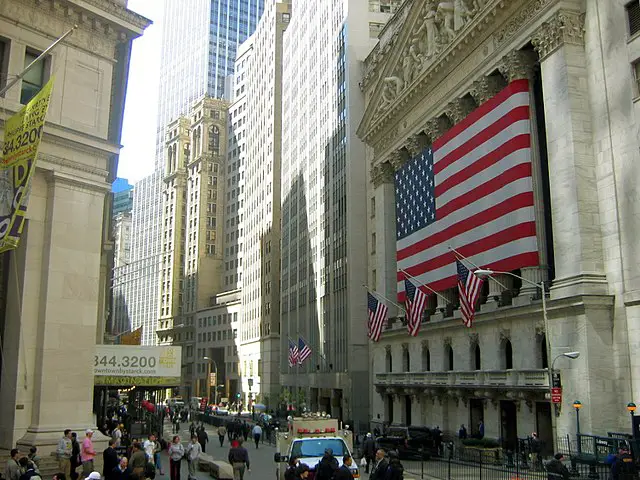


One of New York’s best-known streets, the primary thoroughfare in New York City’s Financial District is Wall Street, and it is found in Lower Manhattan. It contains well-known structures like the Federal Hall, which was reconstructed in the late eighteenth century, and the New York Stock Exchange, which was constructed in the early twentieth century but seems extremely contemporary. Though the names’ antecedents are unclear, Wall Street was originally called “de Waalstraat” in Dutch when it was a part of New Amsterdam in the 17th century. In the years 1685 to 1699, there was a real wall on the roadway. Wall Street served as a slave market, a place to trade stocks, and, beginning in the early eighteenth century (1703), as the site of Federal Hall, New York’s first city hall. Both homes and businesses were present in the region at the beginning of the 19th century, but business began to predominate and Wall Street developed to dominate New York City’s financial sector.
On Wall Street, a number of the first skyscrapers from the 20th century were constructed, including 40 Wall Street, which was once the tallest structure in the world. The New York Stock Exchange, the largest stock exchange in the world by total market capitalisation, the Federal Reserve Bank of New York, numerous commercial banks, and insurance firms are all located in the Wall Street region. The American Stock Exchange, the New York Mercantile Exchange, and other commodity futures exchanges are among the stock and commodity exchanges that have a presence in midtown Manhattan, close to Wall Street. Many brokerage firms had offices close to the exchanges to support the business they conducted there. However, Wall Street actions have a global impact on the economy directly. One Wall Route, the New York Stock Exchange Building, Federal Hall National Memorial, and Wall Street itself are all located on this meandering, narrow street that runs from the East River to Broadway. Numerous New York City Subway lines, ferry terminals, the World Trade Center (1973–2001) site, and the New World Trade Center are all close to the street. It was possible to visit the Stock Exchange before the September 11 attacks and take in the vibrant ambience from the top floor of the structure. It is not now accessible to tourists. We advise you to visit Wall Street from Monday through Friday during business hours to experience the lively atmosphere of this region.
One might not miss the enormous Radio City Music Hall in New York if they were to walk down 6th Avenue (also known as the Avenue of the Americas). It is a Manhattan entertainment location. Over the years, New York’s enormous theatre and elegant architecture have drawn more than 300 million visitors. Rockefeller Center, a larger complex, includes Radio City Music Hall. The facility is named after John D. Rockefeller, Jr., a well-known philanthropist (at least in New York) and the heir to the Standard Oil empire. This part of midtown was referred to as “the speakeasy belt” during the turn of the 20th century, and there wasn’t much to see. Although Rockefeller had a vision to build it, the economics had different ideas. When the stock market collapsed in 1929, the Great Depression began. The land had been prepared with the intention of becoming the future home of the Metropolitan Opera, but those plans were abandoned. It seems hopeless there for a split second. J.D. Rockefeller wasn’t about to give up. He made the decision to move through with the project despite everyone’s objections and to expand and improve it beyond all expectations. The grandeur of the stage begged for live entertainment, so producers expanded the repertoire to include concerts, variety shows, circus acts, and special events. He teamed up with the Radio Corporation of America (NBC’s parent company) and architect Raymond Hood to develop a city within a city, called Radio City. In the recent past Ray Charles, The Grateful Dead, Liberace’s final performance, and five Grammy Award ceremonies are just a few of the renowned performances that have graced the stage. Radio City Music Hall is simple to identify and traverse once you know what you’re doing. However, you must have the knowledge first. If you’ve seen the outside on a New York City walking tour but are itching to see inside, Radio City Music Hall offers stage door tours that last 75 minutes and take you into the backstage areas of the venue. Radio City Music Hall is ideally located in the centre of Midtown. The 47th-50th Street stop is where the orange B, D, F, and M trains that stop at Rockefeller Center physically go underneath the music venue.

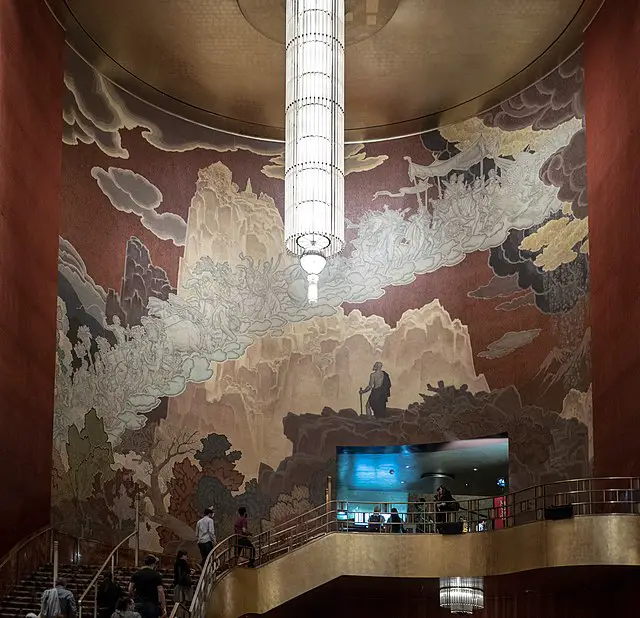
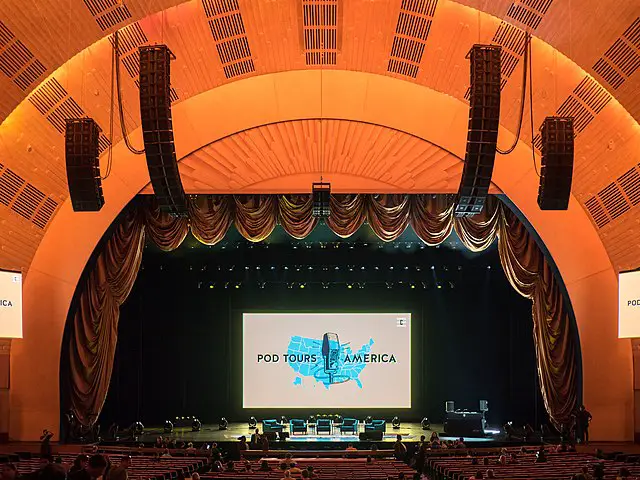

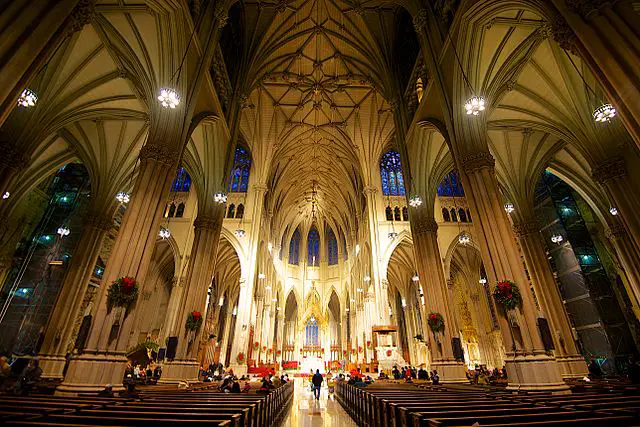
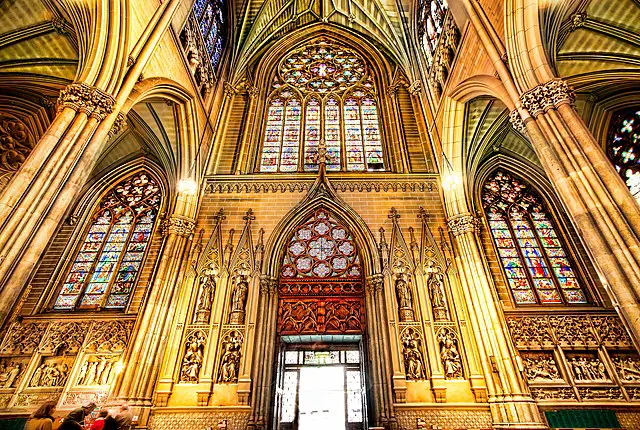
The magnificent Catholic cathedral in New York City’s Midtown Manhattan district is called St. Patrick’s Cathedral. It serves as both a parish church and the office of the Archbishop of New York. The cathedral is located across from Rockefeller Center on a city block surrounded by Fifth Avenue, Madison Avenue, 50th Street, and 51st Street. It is the largest Catholic Gothic Revival cathedral in North America and was created by James Renwick Jr. To serve the expanding Archdiocese of New York and to replace St. Patrick’s Old Cathedral, the cathedral’s construction began in 1858. The American Civil War caused a delay to construction in the early 1860s; the cathedral was finished in 1878 and dedicated on May 25, 1879. James Renwick Jr. erected the archbishop’s residence and rectory in the early 1880s, and the spires were added in 1888. Between 1901 and 1906, a Charles T. Mathews-designed Lady chapel was built. On October 5, 1910, the cathedral was dedicated once all of its debt had been settled. The cathedral underwent extensive repairs on many occasions, including in the 1940s, 1970s, and 2010. Several dozen stained glass windows may be found at St. Patrick’s Cathedral, which is covered with marble. It is 332 feet (101 m) long and reaches its widest point at the transepts, where it is 174 feet (53 m) wide. The cathedral’s Fifth Avenue main entrance is made up of bronze doors, and on either side are towers with spires that reach a height of 329.5 feet (100 m). Nineteen bells can be found in the northern tower, and there are two pipe organs inside. A nave flanked by numerous chapels, two transepts, a chancel and apse, and a crypt are all located inside. The rectory, Lady chapel, and archbishop’s home, which faces Madison Avenue, are located to the east of the apse.
The Cathedral is listed on the National Register of Historic Places and is a recognised landmark in New York City. One of the biggest cathedrals in the nation is St. Patrick’s Cathedral, commonly referred to as “America’s Parish Church.” It occupies an entire city block in Midtown Manhattan when I refer to anything as “big.” That is Madison and Fifth Avenues, as well as 50th and 51st Streets. More than 5 million people visit St. Patrick’s Cathedral each year, a famous historical site around the world. St. Patrick’s is gorgeous on the outside. To really comprehend it, you must see it. It is well known for its enormous bronze doors, stunning high altar, and lavish Neo-Gothic architecture that includes a large number of stained glass windows. It serves as the final resting place for some of New York’s most illustrious clergymen and humanitarians. Additionally, memorial Masses for a number of well-known American celebrities were conducted there. Due to the influence it had on the 1960s classic song “California Dreamin’,” it even has a place in popular culture. You don’t need a ticket and can enter St. Patrick’s Cathedral whenever the doors are open. Although admittance and Mass services are free and open to the public, there are contribution bins available for those who would like to make a donation.
